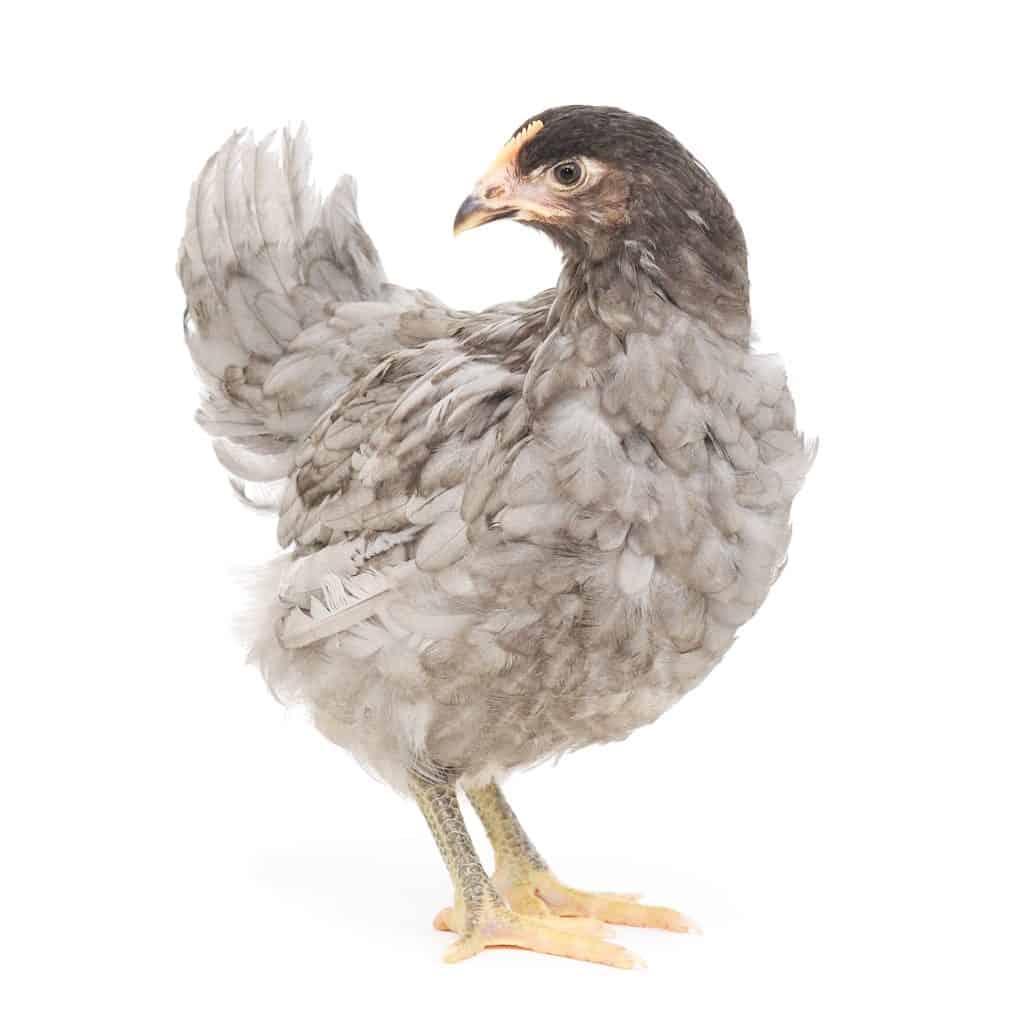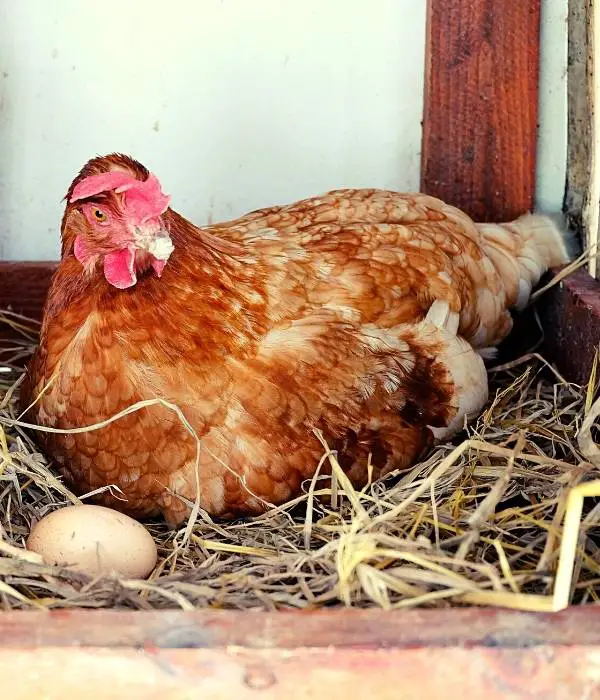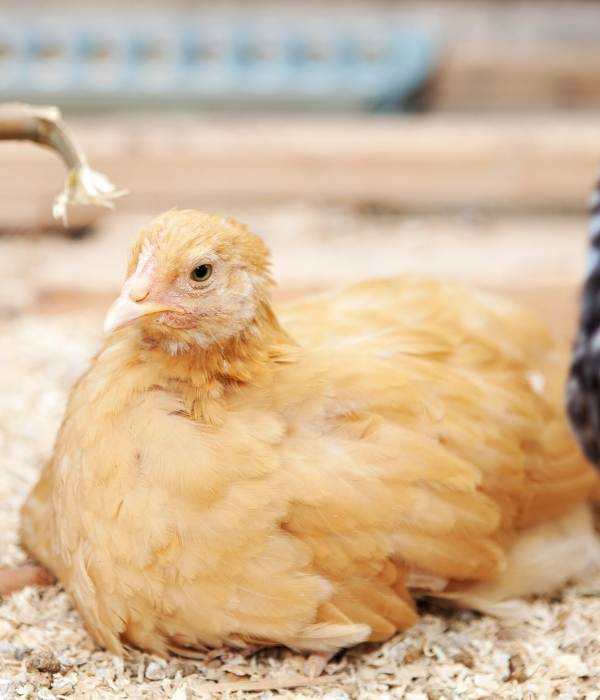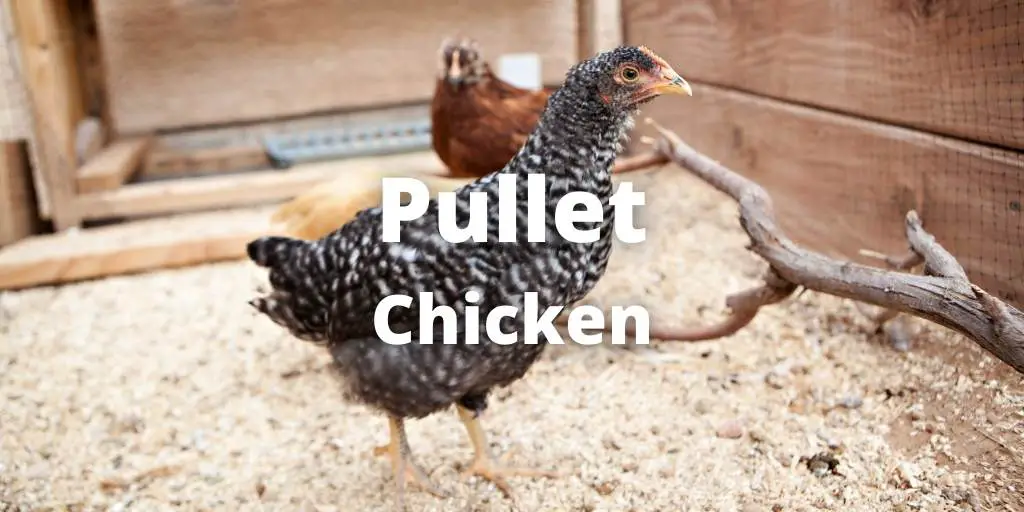Do you know what is pullet chicken? Is it different from a hen? If so, how? In this definitive guide, you will know all about pullets.
This includes the meaning of a pullet chicken, tips for choosing a good one, egg laying, characteristics and appearance, and the common differences between pullets and hens.
What is a Pullet Chicken?

A young hen, usually less than a year old, is called a pullet. In the beginning, pullets have fewer and less shiny feathers. Male chicks under the age of one year are called cockerel.
Pullets are young female chickens that start laying eggs after 8 to 12 weeks. Some people also sell them for meat when they reach 1-1.5 lbs.
When baby chickens start foraging independently after their mother has left them, they can be considered pullets.
The best time to call chickens pullet is when they start laying eggs. When pullet chickens turn one year old, they are called mature hens.
Pullet vs. Hen Chart
| Pullet | Mature Hen |
|---|---|
| Pullet is a female chicken that is less than a year old. | A matured hen is a female chicken that is more than a year old. |
| Pullet chickens have a bright red comb. | Mature hens have a dull, pink to red color comb. |
| The pullet crop is easily visible with bald patches of feathers. Crop Size differs from breed to breed. | Mature hens have fully covered feathers and shiny and beautiful plumage. |
| The beak and nostrils in pullets are well aligned and single color. | The beaks and nostrils in hens are bent and discoloration. |
| The mature hen’s crop is inside fluffy feathers and is large in size. | Mature hen’s eggs are jumbo to large in size. Egg size depends on the breed of the chicken. |
| The legs of the pullet are clean and smooth. They have no injuries and scales. | The pullet vent is wet, clean, and bright in appearance. |
| The vent of a mature hen is mostly dry, having light pink, white, and gray colors. | The beaks and nostrils in hens are bent and discolored. |
| Pullet eggs are very small in size. | Mature hen’s eggs are jumbo to large in size. Egg size depends on un breed of the chicken. |
| Pullets are very active, but they’re not too savvy with how to stay away from predators. | On average, a pullet cost around $8-10. |
| On average a pullet cost around $8-10. | A matured hen cost around $5-7. |
Choosing Pullet Chickens For Backyard Farm
Buying a good quality pullet is best for poultry raisers who don’t want to go through the brooding and breeding process.
You can get your favorite chicken breed in the pullet stage from your nearest breeders. Buying a good quality pullet from a breeder will save you the initial investment in raising chicks.
Buying the right type of chick when starting or maintaining a chicken coop is necessary. If you want to collect lots of eggs, select the best industrial chickens like White Leghorn, Rhode Island Red, and Sussex chicken.
Several commercial brown egg-laying breeds are accessible, which lay approximately along with White Leghorns and are adequate for the hatcheries of specific flocks.
Try raising a few other healthy pullets of the dual-purpose breed so that you will get profit.
You can also buy 17-week-old fully prepared-to-lay pullets. They may start developing eggs a few weeks after you purchase them.
Since pullet chickens can get viral diseases, you must ensure they are vaccinated and screened.
You must separate the new pullet chickens from the old flock until you vaccinate them and they build up immunity.
Started Pullets, Egg Laying Age, and Pullet Chickens
A few different terminologies of stages in female chickens before we get to begin:
- Started pullets – a 15- to 22-week-old female chicken.
- Lay chicken stage – a 22-week-old female chicken.
- Pullets – A pullet is a hen who is younger than a year.

The lay point is the average time when you expect eggs to begin to be produced by your hens. But hens aren’t robots, so the laypoint is only an estimate!
Rhode Island Reds start laying about 18-20 weeks, and Orpingtons can stay up to 28 weeks to start laying. Some other varieties lay eggs faster than others. You may have a sense of how advanced your bird may be.
Rhode Island Red, like chickens, gives your flock strong, durable siblings. Many factors affect the growth of pullets, including feed, living environment, stress, and the number of roosters you have.
For several weeks, the hen won’t give you an egg. The pressure of adjusting to a new coop and flock may slow things down a little, so don’t worry.
Also, remember that pullets are still new to foraging, so there is a risk of predator attack on them. When most of the flocks are under one year of age, it is recommended to use a good quality chicken wire.
The juvenile period, especially when they are under a year old, is the most profitable and good egg-laying period for pullets. Young chickens of different breeds have different characteristics depending on their age.
About Pullets Eggs

- Your pullet’s eggs would be smaller than those of a mature hen.
- Small eggs of pullets are often used for different purposes in industrial processing (such as powdered eggs).
- Because the market prefers relatively large eggs, you must wait until your pullets mature and start laying jumbo to large eggs.
- You can eat pullet eggs at home.
- Several chefs prefer pullet eggs because they have a richer yolk and taste richer.
- When you fry them, be careful because they cook faster than regular eggs.
Conclusion
Before purchasing pullets, it helps if you do your research. Study about pullets as well as their treatment criteria as much as you can.
It will help if you are confident about what you want in a breed and then search for respectable breeders.
If you’re unsure about buying a pullet, ask your friends already in that business. They will inform you which chicken breed is best for you and your area.
You can start farming with a few healthy pullets and cockerel. I hope this guide helped you to understand all about pullet chicken.
How many pullets do you have? Share your experience below.

i have aprox 40 chickens hens are about to start laying soon , i got my chicks june the 3rd and they weigh close to 10 lbs dressed very nice birds , i need imfo , how to tell a laying hen from a meat bird
Thanks for writing here charles. Are you asking how to recognize the male female or the laying age of the breed? Can you please tell me the chicken breed name?